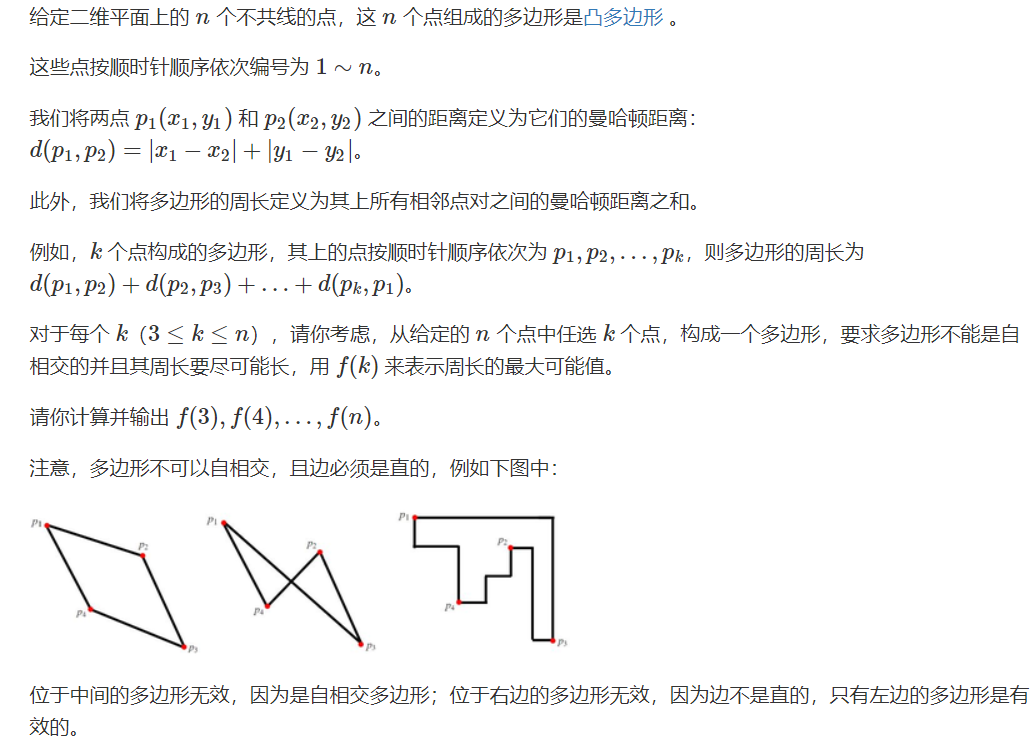最大周长(贪心)
题意

题目链接:https://www.acwing.com/problem/content/4608/
数据范围
思路
首先需要注意的是,这里的距离指的是曼哈顿距离,而不是欧几里得距离。
我们观察个点的凸多边形的周长,通过线段的平移发现,等价于一个外接长方形的周长。
再继续观察发现,只需要四个点就可以确定这个外接长方形,即:最上边的点、最下边的点、最左边的点和最右边的点。
因此,当时,答案就已经确定。下面考虑的情况。
我们枚举所有点,将其作为三角形的左下角(左上角、右上角、右下角),剩下两个点必然为最上边的点和最右边的点(最下边的点和最右边的点、最下边的点和最左边的点、最上边的点和最左边的点)。取最大值即可。
代码
#include <iostream>
#include <cstring>
#include <algorithm>
#include <cstdio>
using namespace std;
const int N = 300010, inf = 0x3f3f3f3f;
int n;
int X[N], Y[N];
int main()
{
scanf("%d", &n);
int u = -inf, d = inf, l = inf, r = -inf;
for(int i = 1; i <= n; i ++) {
scanf("%d%d", &X[i], &Y[i]);
u = max(u, Y[i]), d = min(d, Y[i]);
r = max(r, X[i]), l = min(l, X[i]);
}
int res = 0;
for(int i = 1; i <= n; i ++) {
res = max(res, u - Y[i] + r - X[i]); //左下角
res = max(res, u - Y[i] + X[i] - l); //右下角
res = max(res, Y[i] - d + r - X[i]); //左上角
res = max(res, Y[i] - d + X[i] - l); //右上角
}
printf("%d ", 2 * res);
for(int i = 4; i <= n; i ++) {
printf("%d ", 2 * (u - d) + 2 * (r - l));
}
printf("\n");
return 0;
}



【推荐】国内首个AI IDE,深度理解中文开发场景,立即下载体验Trae
【推荐】编程新体验,更懂你的AI,立即体验豆包MarsCode编程助手
【推荐】抖音旗下AI助手豆包,你的智能百科全书,全免费不限次数
【推荐】轻量又高性能的 SSH 工具 IShell:AI 加持,快人一步
· 地球OL攻略 —— 某应届生求职总结
· 周边上新:园子的第一款马克杯温暖上架
· Open-Sora 2.0 重磅开源!
· 提示词工程——AI应用必不可少的技术
· .NET周刊【3月第1期 2025-03-02】